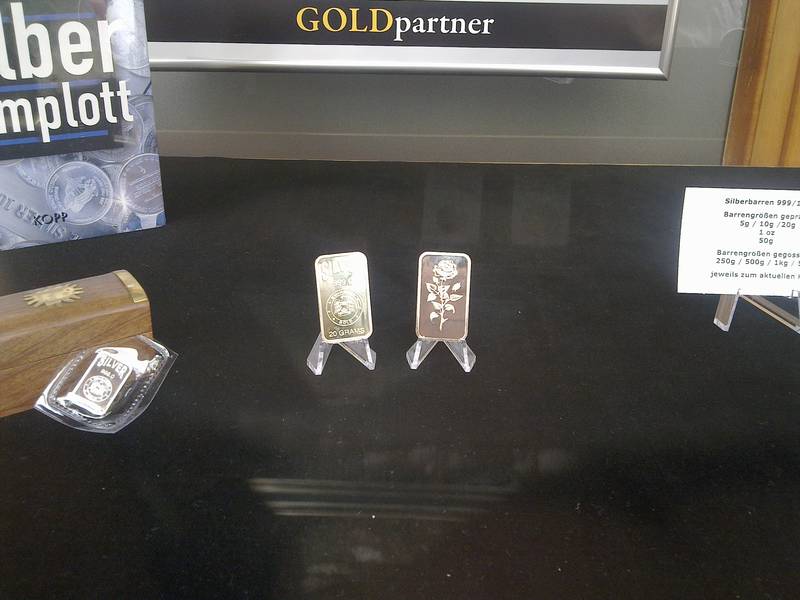Silver bars
Silver is a popular precious metal for investments worldwide due to its intrinsic value and widespread use in various industries. In Europe, physical silver bars serve as an attractive investment option because they offer tangible assets that can potentially appreciate over time or provide liquidity during economic uncertainties.
European countries have a rich history with precious metals like silver due to their mining traditions and the significant role of these metals in coinage throughout centuries. Today, investors from across Europe consider purchasing physical silver bars as part of diversifying investment portfolios or hedging against inflation risks.
Silver bar sizes typically range from 1 oz (31 grams) to larger ones weighing up to one kilogram and beyond in some cases, with the most common being 1 kg bars due to their affordability compared to smaller sizes while still offering a substantial investment amount. These silver bars are usually produced by reputable mints such as PAMP Suisse, Argor-Heraeus (Switzerland), Johnson Matthey (UK) and others who adhere to strict quality standards ensuring purity levels of 99.9% or higher for investment grade bullion bars.
However, when it comes to importing silver bars into Europe from other countries like the United States, one issue that often arises is Value Added Tax (VAT). Varying rates and rules apply across different EU member states; thus, understanding these regulations can be complex for investors not familiar with European tax laws.
In general terms, importing goods worth over a certain threshold triggers obligations to pay local sales or import duties including Value Added Tax (VAT). For silver bars specifically, the VAT rate depends on each country’s legislation but generally hovers around 20%. This can significantly increase the overall cost of acquiring physical silver.
Despite these challenges, there are ways to circumvent or minimize potential VAT liabilities when importing silver into Europe:
1) Establishing a local business presence: By setting up an entity in one EU country and purchasing bars from international suppliers through this established company, you can potentially claim input tax credits against the output tax owed on sales within that jurisdiction. However, establishment costs might outweigh savings for smaller investors.
2) Using a VAT-registered intermediary: Engaging with an EU-based precious metals dealer who has registered for and can handle all necessary customs procedures could help avoid direct interaction with complex tax rules while ensuring compliance. Such entities often provide competitive pricing due to their bulk purchases or established relationships within the industry.
3) Exemptions based on usage: Some countries may offer VAT exemption if silver bars are intended for specific purposes, such as jewelry production rather than resale or investment reasons; however, this varies significantly by country and requires thorough research to qualify.
For those interested in exploring these options further without delving into the complexities themselves, direct contact with our team specializing in European precious metals investments would be beneficial. We can guide you through available alternatives tailored to your unique circumstances while ensuring regulatory compliance and optimal cost efficiency regarding VAT considerations related to importing silver bars from overseas markets into Europe.
